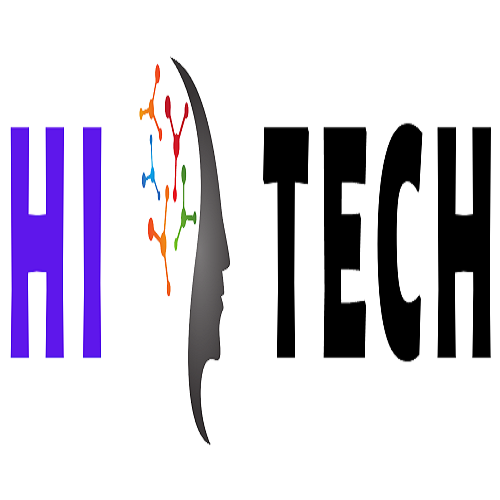Introduction:
Magnetic
resonance imaging (MRI) is a medical imaging technique that uses a strong
magnetic field and radio waves to create detailed images of the body's internal
structures. The MRI machine consists of a large magnet that generates a strong
magnetic field around the patient, a radiofrequency coil that sends and
receives radio waves, and a computer that processes the signals to create
images.
Unlike
X-rays and CT scans, MRI does not use ionizing radiation, which can be harmful
to the body. This makes MRI a safe and noninvasive imaging technique that can
be used to diagnose a wide range of medical conditions.
Diagnosing and Monitoring of Diseases:
MRI
technology has revolutionized medical imaging and has become an essential tool
for diagnosing and monitoring many diseases and conditions. MRI can produce
images of soft tissue structures in the body, such as the brain, spinal cord,
heart, liver, and other organs. It can also show changes in these structures
that may be indicative of disease or injury.
MRI
is used in many different medical specialties, including neurology,
orthopedics, cardiology, oncology, and gastroenterology. It can be used to
diagnose conditions such as brain tumors, spinal cord injuries, heart disease,
liver disease, and gastrointestinal disorders.
In Neurology:
In
neurology, MRI is used to diagnose and monitor conditions such as multiple
sclerosis, Alzheimer's disease, Parkinson's disease, and stroke. MRI can
produce detailed images of the brain and spinal cord, allowing doctors to
identify abnormalities and track changes over time.
In Orthopedics:
In
orthopedics, MRI is used to diagnose and monitor conditions such as torn
ligaments, herniated discs, and osteoarthritis. MRI can produce images of
bones, joints, and soft tissues, allowing doctors to identify and assess
injuries and conditions affecting the musculoskeletal system.
In Cardiology:
In
cardiology, MRI is used to diagnose and monitor conditions such as heart
disease, heart failure, and congenital heart defects. MRI can produce images of
the heart and blood vessels, allowing doctors to identify abnormalities and
assess heart function.
In Oncology:
In
oncology, MRI is used to diagnose and monitor cancer. MRI can produce images of
tumors and surrounding tissues, allowing doctors to identify the location and
extent of the cancer and assess treatment response.
In Gastroenterology:
In
gastroenterology, MRI is used to diagnose and monitor conditions such as
Crohn's disease, ulcerative colitis, and liver disease. MRI can produce images
of the digestive system, allowing doctors to identify abnormalities and assess
disease activity.
Development:
MRI
technology has continued to evolve over the years, with advances in hardware
and software leading to improved image quality and faster scanning times. New
techniques such as functional MRI (fMRI) and diffusion tensor imaging (DTI)
have also been developed, allowing doctors to study brain function and
connectivity in greater detail.
Types:
There
are several types of MRI scans that are used for different purposes in medical
imaging. The most common types of MRI scans include:
T1-weighted MRI: This type of MRI scan provides high-resolution
images of the anatomy of the body. It is used to visualize the structures of
the body, such as bones, organs, and soft tissues. T1-weighted MRI scans are
used in many different medical specialties, including neurology, cardiology,
and orthopedics.
T2-weighted MRI: This type of MRI scan provides images of the
body's soft tissues, such as muscle, fat, and fluid. T2-weighted MRI scans are
used to diagnose and monitor a wide range of conditions, including tumors,
infections, and inflammation.
Diffusion-weighted MRI (DWI): This type of MRI scan measures the
movement of water molecules in the body's tissues. DWI can be used to diagnose
and monitor conditions such as stroke, brain tumors, and multiple sclerosis.
Magnetic resonance angiography (MRA): This type
of MRI scan produces images of the body's blood vessels, allowing doctors to
assess blood flow and identify blockages or abnormalities. MRA is commonly used
to diagnose and monitor conditions such as aneurysms, arterial stenosis, and
vascular malformations.
Functional MRI (fMRI): This type of MRI scan is used to
study brain function and activity. fMRI can produce images of the brain in
real-time, allowing doctors to identify areas of the brain that are active
during specific tasks or stimuli.
Magnetic resonance spectroscopy (MRS): This type
of MRI scan measures the chemical composition of tissues in the body. MRS can
be used to diagnose and monitor conditions such as tumors, metabolic disorders,
and neurodegenerative diseases.
Perfusion MRI: This type of MRI scan measures blood flow in
the body's tissues, allowing doctors to assess tissue viability and identify
areas of hypoperfusion or ischemia. Perfusion MRI is commonly used in neurology
and oncology.
Strengths and Limitations:
Each
type of MRI scan has its own strengths and limitations, and doctors will choose
the appropriate type of scan based on the patient's medical history and
symptoms. MRI technology continues to evolve, with new techniques and
applications being developed to improve the accuracy and speed of medical
imaging.
Conclusion:
In
conclusion, MRI technology has revolutionized medical imaging and has become an
essential tool for diagnosing and monitoring many diseases and conditions. MRI
is a safe and noninvasive imaging technique that can produce detailed images of
soft tissue structures in the body, allowing doctors to identify abnormalities
and track changes over time. MRI is used in many different medical specialties,
including neurology, orthopedics, cardiology, oncology, and gastroenterology,
and has become an indispensable tool in modern medicine.








0 Comments